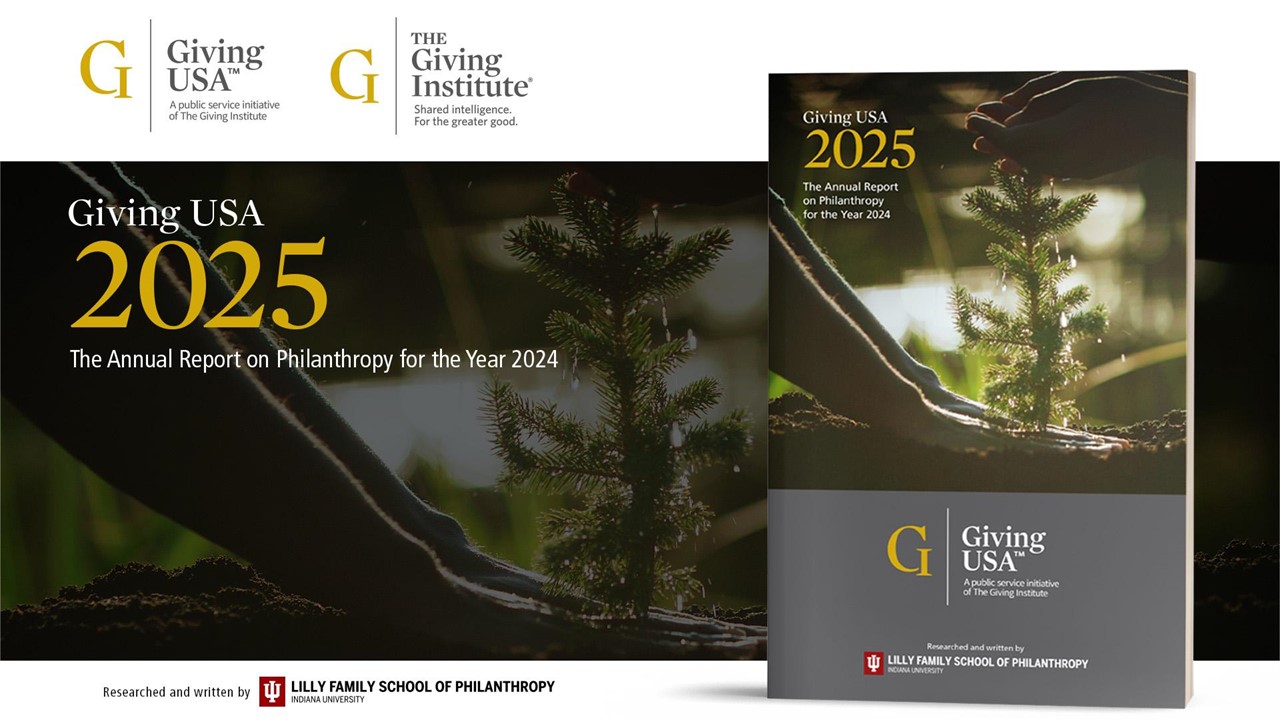Planned giving programs provide a way for nonprofits to develop funding resources that are needed to ensure their future.
In this guide, we will cover the essentials for smaller nonprofit planned giving programs, including:
- What is Planned Giving?
- Why is Planned Giving Important?
- Who Should Have a Planned Giving Program?
- 7 Steps to Build—and Sustain—a Planned Giving Program
What is Planned Giving?
Planned giving (also known as deferred or legacy giving) describes giving a future gift to a nonprofit through financial and estate plans. This type of gift is usually—but not always—made from the donor’s accumulated assets and is part of their overall estate plan.
Why is Planned Giving Important?
We know from the latest Giving USA report that bequest giving continues to account for 9 percent of all charitable giving ($45.6B in 2022). We also know that talking about this giving option makes a positive difference in realizing gifts. That means that for nonprofits (even smaller ones) who invite this method of supporting their mission, planned giving continues to be a source of a steady and significant revenue stream.
For smaller nonprofits, a planned giving program can also:
- Help you engage more deeply with donors.
- Diversify your fundraising sources and balance your fundraising efforts.
- Positively impact your annual giving program. Planned giving donors tend to increase their average annual giving after making their planned gift.
Who Should Have a Planned Giving Program?
For a new nonprofit, it is important to prioritize securing cash gifts to support ongoing operation and program needs. Developing even a simple planned giving program can be time-consuming and resource-intensive. However, as the nonprofit matures and develops longer-term relationships with the community and its supporters, it can make good sense to start a focused planned giving program.
7 Steps to Build—and Sustain—a Planned Giving Program
Planned giving programs do not need to be overly complicated but they do require intentional and consistent planning to be successful. A nonprofit can start with a simple, well-run program and then layer complexity as future needs merit.
Make the Case to Your Board
For a planned giving program to be successful, your board needs to be on board (pardon the pun). Educate your board about the role of planned giving in your nonprofit’s long-term growth and sustainability. It is going to take time, resources, and patience to build an effective planned giving program, and the board should be providing all three. They can also be your first planned giving donors if they are invited to give.
Identify Your Staff
In the ideal world, you will have the resources to assign a full-time planned giving director to build and promote the planned giving program. But for smaller nonprofits, that is not fiscally possible. The responsibilities for planned giving can be shared by:
- The executive director
- The development director
- The board’s development committee
- Outside legal counsel
Because these roles have other duties, it can be an ongoing challenge for a small nonprofit fundraising shop to keep planned giving a priority in its day-to-day work. Goal setting and communication is necessary. Planned giving metrics should be added to development reports and revisited on a timely and consistent basis to ensure forward momentum.
Learn the Basics of Planned Giving
According to a recent study by WHO, only 37 percent of development officers reported feeling confident discussing planned giving concepts with donors (Giving USA Foundation Giving USA 2023 Digital Report). Clearly, there is a big opportunity for nonprofits to educate their development staff to cultivate planned gifts that would benefit both the donor and the nonprofit. Carve out time for your staff to attend a virtual education session from a local Leave A Legacy chapter or other fundraising association. Or hire a consultant to deliver a training workshop and invite your board to attend. Such a session could cover the fundamentals of gift planning as well as the strategies and instruments that donors and their advisors use to structure gifts. Practice together through case studies to develop skills in listening for clues that donors give to indicate their readiness to consider a planned gift.
Focus on Bequests and Retirement Accounts
With limited time and resources, smaller planned giving programs should concentrate on a bequest giving program. Most planned gifts are bequests—from donors’ wills, trusts, retirement accounts, and life insurance. And with the recent tax law changes, there is even more flexibility around making gifts out of retirement funds through Qualified Charitable Distributions (QCD) that offer donors the option of making tax-free gifts to charities through their retirement plans. According to Giving USA, QCD gifts are on the rise, especially for nonprofits that talk about them as an option with donors.
Produce Communications Materials
Setting up a planned giving program means your nonprofit is now looking to the future in a significant way. You are inviting your donors to invest in that future. Planned giving marketing helps shift your message from current needs towards the long-term message of stability.
Create distinguishing branding with simple messaging that invites donors to “make a gift in your will or trust” and consistently include it on your website and in your digital and print messaging. Provide some examples of language donors can use to create a bequest. Be sure that your organization’s legal name and tax identification number are also included and easily found on your website.
Show potential donors the power of planned giving by sharing stories of your donors on your website and in your newsletters. Highlight how they created their gifts and what motivated them to do so. These stories will encourage more people to become part of your growing planned giving program and support your mission.
Develop and Manage a List of Prospects
Just like other gifts, planned giving donors need to be identified, cultivated, and asked to make a gift. In this work, your database of donors is a key resource for your new program. Make sure the information in it is accurate, complete, and timely. If your database is not helping you achieve your development objectives, you should prioritize solving that issue.
Use the data to find and cultivate planned giving donors who will support your cause. Factors that can go into identifying planned gift prospects include:
- Giving behavior
- Property ownership
- Length and depth of engagement
- Age, family, and marital status
As you develop a list of prospects for marketing and for individual outreach, pay attention to capacity. As you engage prospects and as they show interest, be sure you provide them with prompt follow-up and attention. And once the gift is made, effective and strategic stewardship is even more important for further engaging and retaining planned giving donors.
Find Support to Help You Scale
Technology and outside expertise can help smaller planned giving programs build and grow more efficiently. There are several options available that will give fundraising staff the tools they need to engage in more discussions with prospects and donors on planned giving opportunities.
- Outside counsel can provide data and insights to help you build out your program, train staff, and develop the policies and infrastructure for stewarding planned gifts.
- Marketing partners can help you create messaging and donor stories.
- Planned giving software can link to your website and help site visitors learn about planned giving options and the tax advantages and even provide support in drafting simple wills or other bequests.
Are you ready to build out your planned giving program? BWF is ready to partner with you. BWF has 40 years of experience in assessing and designing planned giving programs for a range of nonprofits. To learn more about how BWF can help you create the planned giving program that works best for your organization’s long-term fundraising success, contact our team.




